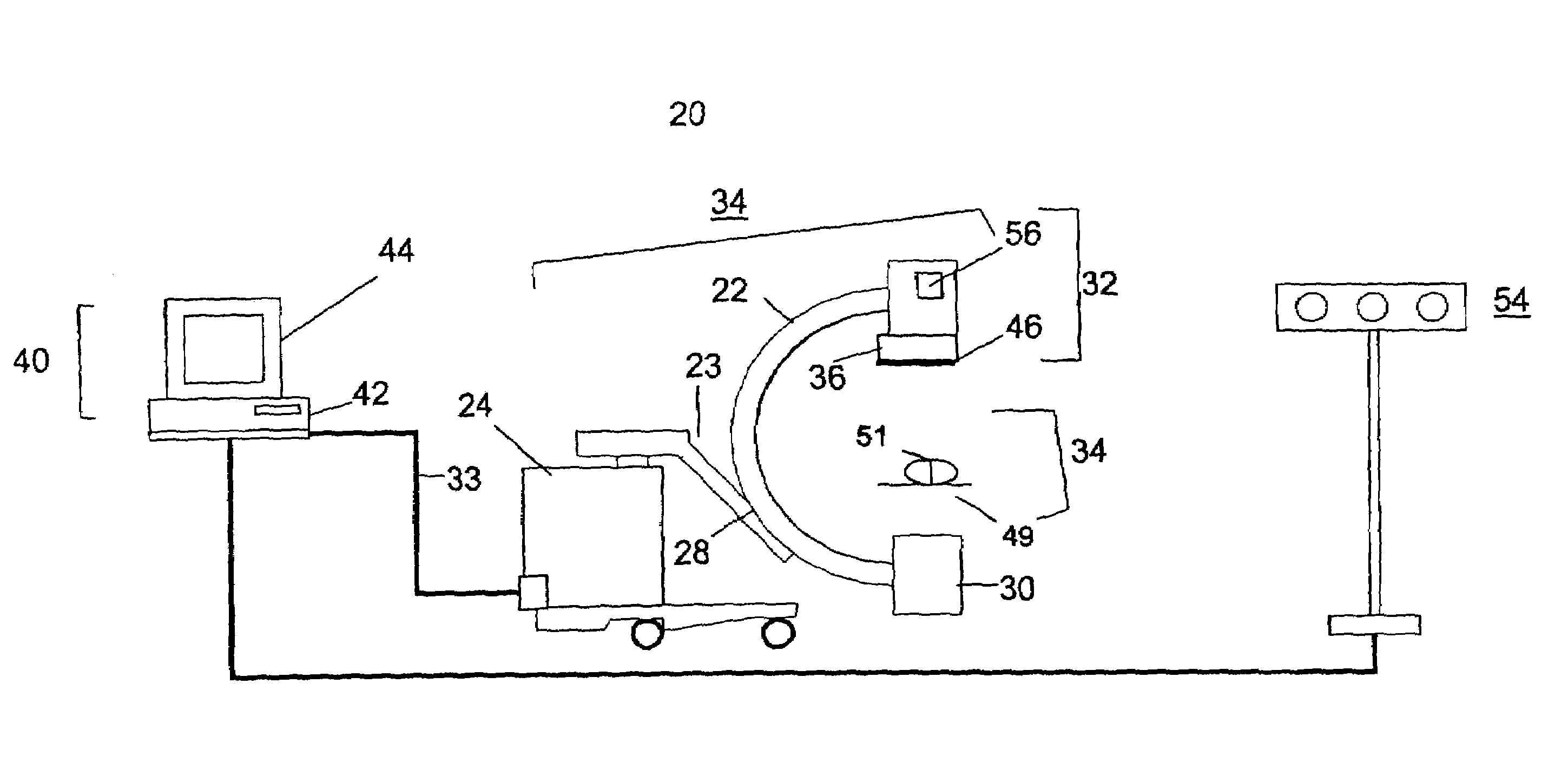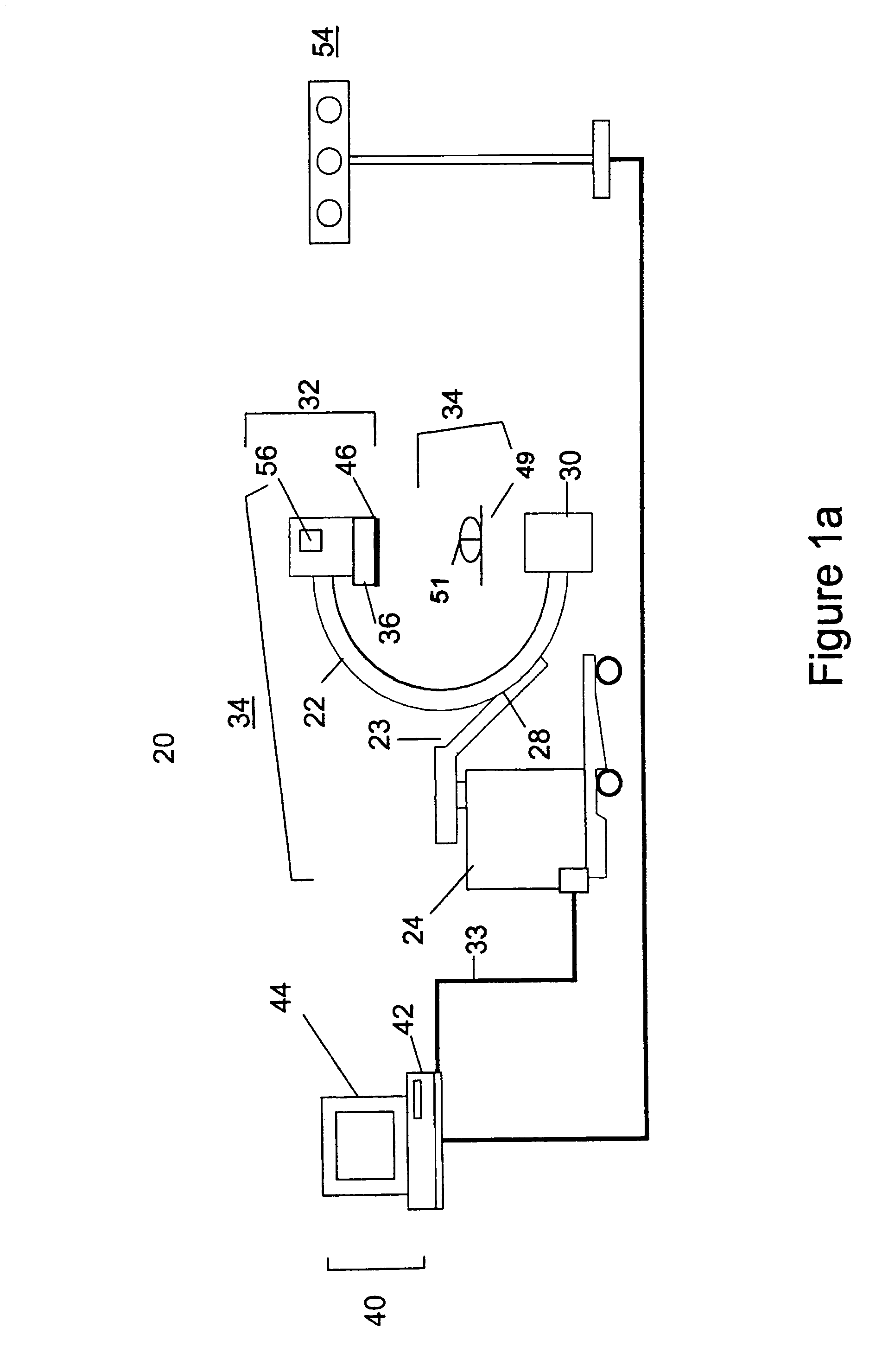Apparatus, system and method of calibrating medical imaging systems
a technology of medical imaging and apparatus, applied in the field of medical imaging systems, can solve the problems of radial and rotational distortion of image produced by image intensifier, initial image generation exhibit distortion, and one source of distortion is gravity, so as to achieve strong clinical benefit and increase the effect of spa
- Summary
- Abstract
- Description
- Claims
- Application Information
AI Technical Summary
Benefits of technology
Problems solved by technology
Method used
Image
Examples
Embodiment Construction
[0034]Referring to FIGS. 1a and 1b, a fluoroscopic C-arm X-ray imaging apparatus is provided. Imaging device 20 includes a C-arm 22 slidably and pivotally attached to a downwardly extending L-arm 23 at an attachment point 28. The L-arm 23 is held in suspension by a support base 24. The C-arm 22 is orbitable γ degrees about an axis of orbital rotation 27, while the L-arm 23 is rotatable κ degrees about an axis of lateral rotation 27 to thereby rotate the C-arm 22 laterally. The imaging device 20 may electronically communicate with a control unit (not shown) such that the control unit through external input may operate the degree of orbital and lateral rotation of the imaging device 20. The degrees of rotation γ and κ may be displayed for orientation.
[0035]An imaging source 30 is located at one end of C-arm 22 and imaging receptor 32 is located at the other end of C-arm 22. In the embodiment depicted in FIGS. 1a and 1b, the imaging source 30 is an X-ray source while the imaging recept...
PUM
 Login to View More
Login to View More Abstract
Description
Claims
Application Information
 Login to View More
Login to View More - R&D
- Intellectual Property
- Life Sciences
- Materials
- Tech Scout
- Unparalleled Data Quality
- Higher Quality Content
- 60% Fewer Hallucinations
Browse by: Latest US Patents, China's latest patents, Technical Efficacy Thesaurus, Application Domain, Technology Topic, Popular Technical Reports.
© 2025 PatSnap. All rights reserved.Legal|Privacy policy|Modern Slavery Act Transparency Statement|Sitemap|About US| Contact US: help@patsnap.com



